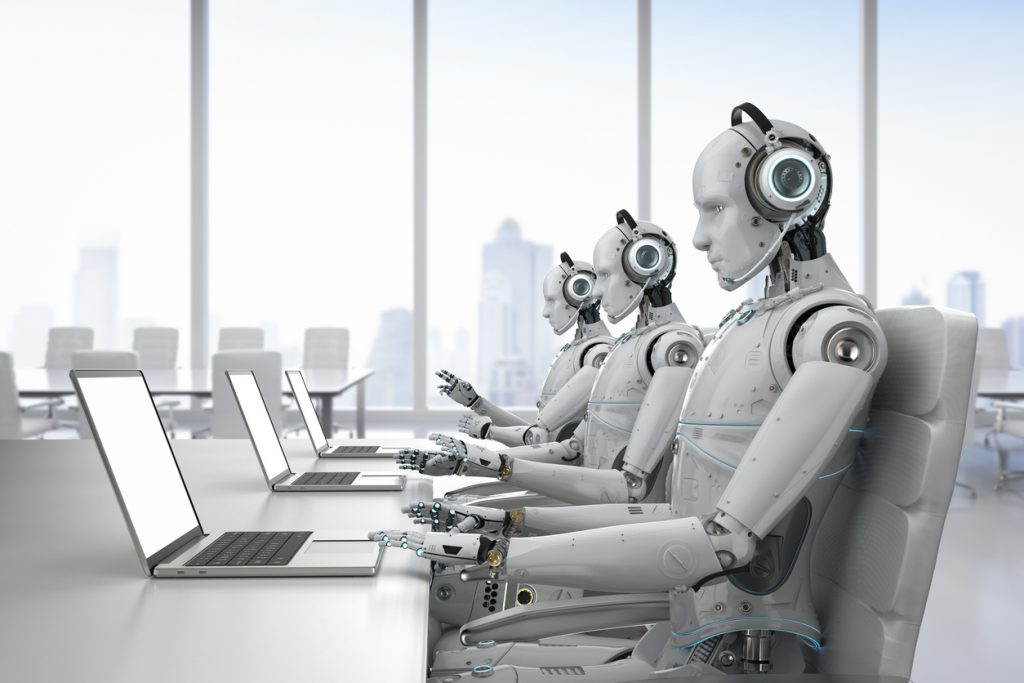The Impact of Artificial Intelligence on the Workforce

Artificial intelligence (AI) is rapidly changing the way we live and work. It has the potential to revolutionize industries and improve our lives in countless ways, but it also poses challenges for the workforce. In this article, we will explore the impact of AI on the workforce and discuss the potential consequences of this technology.

One of the most significant impacts of AI on the workforce is the potential for job displacement. As machines become more capable of performing tasks that were previously done by humans, many jobs may become obsolete. This is particularly true for jobs that involve repetitive or predictable tasks, such as data entry or customer service. However, AI also has the potential to create new jobs, such as those related to the development and maintenance of AI systems.
Another impact of AI on the workforce is the changing nature of work. As machines become more capable, they will be able to perform tasks that were previously the domain of highly skilled workers. This means that workers may need to develop new skills and adapt to new roles in order to stay employable. Additionally, AI systems may also require less human oversight, which could lead to more autonomy for workers.
Despite the challenges that AI poses for the workforce, there are also many benefits to this technology. For example, AI can help to improve productivity and efficiency, which can lead to increased economic growth and higher wages. Additionally, AI can help to automate tasks that are dangerous or undesirable for humans, such as those in the manufacturing or healthcare industries. Furthermore, AI can also be used to improve decision-making and problem-solving, which can lead to better outcomes for businesses and individuals.
One of the ways to mitigate the negative impacts of AI on the workforce is through education and training. Investing in education and training programs can help to ensure that workers have the skills they need to adapt to the changing nature of work. Additionally, governments and businesses can work together to create new training programs and apprenticeships that will help workers to develop the skills they need to succeed in the new economy.
Another solution is to ensure that workers are fairly compensated for the work they do. This means that workers should be paid a living wage and have access to benefits such as health care and retirement savings. Additionally, governments can implement policies that ensure that workers are protected from discrimination and exploitation.
In conclusion, AI is having a significant impact on the workforce. While it poses challenges for workers, it also has the potential to improve our lives in countless ways. To ensure that the benefits of AI are realized, it is important for governments and businesses to invest in education and training programs, and to ensure that workers are fairly compensated for the work they do. Additionally, it is important for policymakers to consider the potential impacts of AI on the workforce and develop policies that will help to mitigate any negative consequences. By doing so, we can ensure that the benefits of AI are realized for all workers, and that we are able to create a more equitable and prosperous society for all.
Additionally, another solution is to focus on creating a shared economy where the benefits of AI are distributed among all members of society. This can be achieved through policies such as universal basic income, which would provide a safety net for those who are displaced by AI, and also provide them with the resources they need to retrain and adapt to new roles.
Moreover, businesses can play a role in ensuring that the benefits of AI are shared by all. For example, they can make sure that their AI systems are designed to improve the lives of workers and not just to increase profits. Additionally, they can invest in the local communities where they operate and make sure that their employees are treated fairly.
As AI continues to advance, it is important that we think about how to best harness its potential while also mitigating its negative impacts on the workforce. By working together and implementing policies that promote education, fair compensation, and shared benefits, we can create a future in which AI benefits everyone.
Finally, it’s worth mentioning that AI not only can be used to automate tasks, but it can also be used to augment human capabilities. AI can be used to improve the decision making process, by providing real-time data analysis and insights, it can help with scheduling and resource allocation, it can help with customer service and personalization, or it can help with monitoring and predictive maintenance. All of these examples have the potential to improve the quality of life for workers, making their work more efficient, less time-consuming and less stressful.
In conclusion, AI has the potential to significantly change the way we live and work, and its impact on the workforce will be one of the most important issues to consider in the coming years. While there are challenges to be addressed, there are also many opportunities to be realized. By investing in education and training, ensuring fair compensation, and creating a shared economy, we can create a future in which AI benefits everyone. Additionally, by using AI to augment human capabilities, we can improve the quality of life for workers. The key is to be proactive and take action now to ensure that the future of AI and the workforce is one that we can all be excited about.




